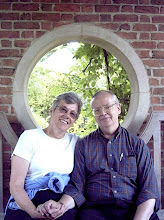The Nerves sit ceremonious, like Tombs —
The stiff heart questions was it He, that bore,
And Yesterday, or Centuries before?
The Feet, mechanical, go round —
Of Ground, or Air, or Ought —
A Wooden way
Regardless grown,
A Quartz contentment, like a stone —
This is the Hour of Lead —
Remembered, if outlived,
As Freezing persons, recollect the Snow —
First — chill — then Stupor — then the letting go —
— Emily Dickinson, from The Complete Poems of Emily Dickinson, Thomas H. Johnson (ed.), in Parabola, “Liberation,” Fall 1990, p. 51.
This is the amazing phenomenon of a myth, which is so important to recognize today, when we can’t avoid falling into the habit of explaining every step we make. Suddenly we encounter a quite different form, a form which speaks very powerfully, with very precise, immediately recognizable meaning; and that meaning is there, we receive it, we seem to understand it, yet when we try to dissect it, it slips between our fingers. This shock that comes from encountering a great myth acts upon us, in a sense, by opening the mind. Now, to be really open in an unexpected way, we need to reach the state of great emptiness that is so often referred to in different traditions — that moment when there is nothing but a complete void; and music exists, poems and sounds exist, so as to lead us straight to that extraordinary state of pure openness, of real freedom.
— Peter Brook, “The Sleeping Dragon,” in Parabola, Fall 1990, pp. 52-53.
Chronology of an Idea
1714 — Gottfried Wilhelm von Leibniz, discoverer of integral and differential calculus, said that a metaphysical reality underlies and generates the material universe. Space-time, mass and motion of physics and transfer of energies are intellectual constructs. . . . 1902 — William James proposed that the brain normally filters out a larger reality. . . . 1929 — Alfred Whitehead, mathematician and philosopher, described nature as a great expanding nexus of occurrences not terminating in sense perception. Dualisms such as mind/matter are false; reality is inclusive and interlocking. . . . and Karl Lashley published his great body of research demonstrating that specific memory is not to be found in any particular site in the brain but is distributed throughout. . . . 1947 — Dennis Gabor employed Liebniz’s calculus to describe a potential three-dimensional photography: holography. . . . 1965 — Emmett Leith and Juris Upatnicks announced their successful construction of holograms with the newly invented laser beam. . . . 1971 — Physicist David Bohm, who had worked with Lashley as a neurosurgeon, proposed that the hologram was a powerful model for brain processes. . . . 1977 — Pribram speculated on the unifying metaphysical implications of the synthesis.
— Brain-Mind Bulletin, 2(16): 4 July 1977, in Chrysalis, “Re-Visioning,” Volume II, Issue 3, Autumn 1987, p. iv (Preface).

No comments:
Post a Comment